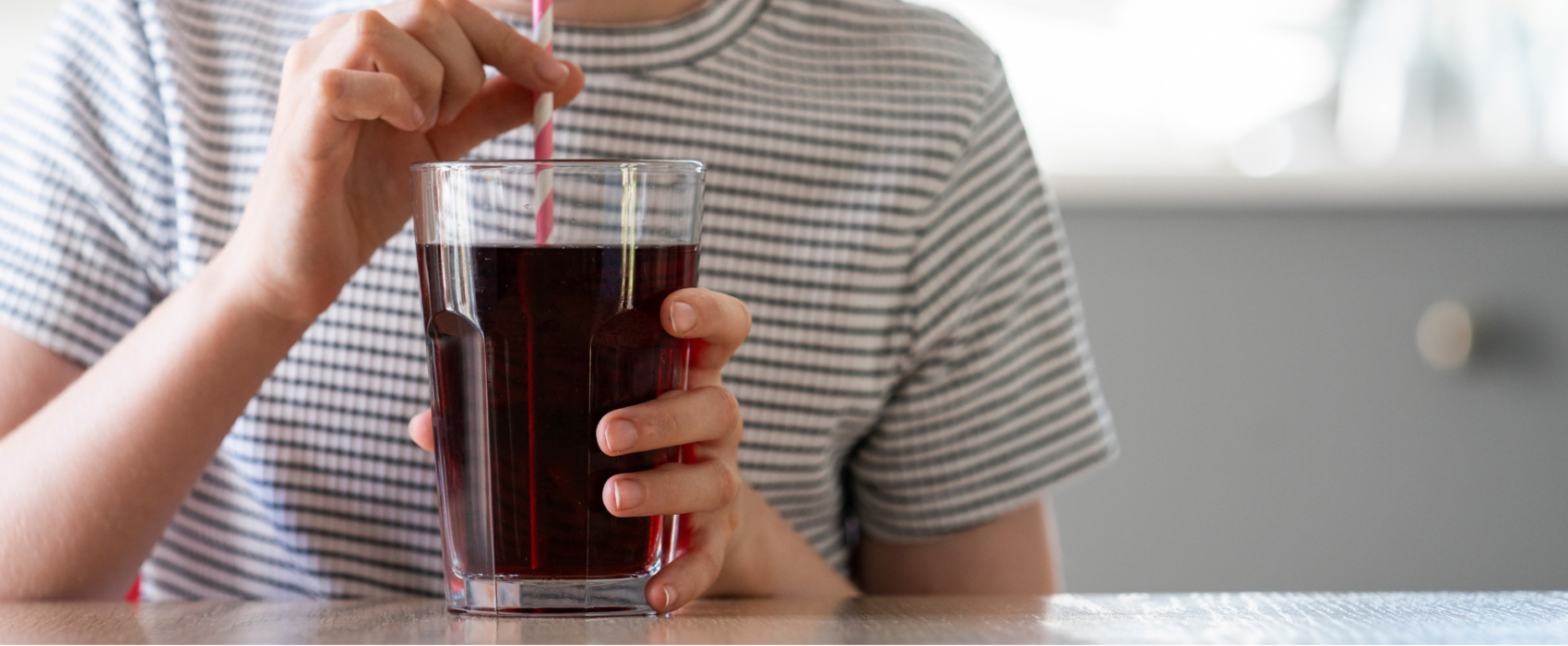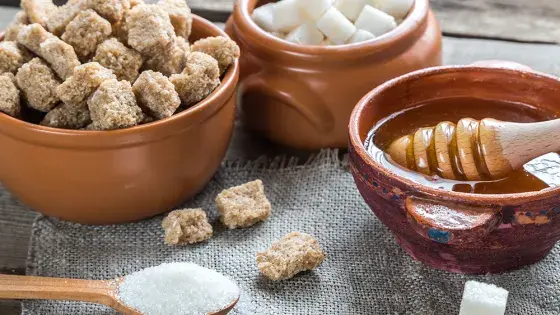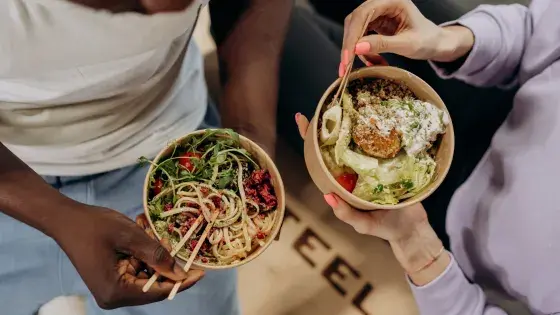Reducing your sugar intake is an important step towards a healthier lifestyle.
As a major contributor to health problems like obesity, diabetes and heart disease, it’s important to maintain healthy, balanced sugar levels throughout the day.
The NHS recommends that sugar should not make up more than 5% of the energy you get from food and drink each day, which is around 30g for anyone over the age of 11.
Sugar in disguise
Sugar is added to many packaged foods, even those that are marketed as healthy. If a product states it’s high in sugar, it will contain 225g or more of sugars per 100g, and 5g or less for low in sugar.
Read labels carefully and look for added sugars, which can be listed in lots of different ways:
- Sucrose
- Glucose
- Fructose
- Maltose
- Fruit juice
- Molasses
- Hydrolysed starch
- Invert sugar
- Corn syrup
- Honey
Some packaging uses a colour-coded system that makes it easy to choose foods that are lower in sugar, salt and fat. Look for more "greens" and "ambers", and fewer "reds" in your shopping basket.
Choose foods that are low in added sugars, or better yet, choose whole foods that are naturally low in sugar.
Learn more about sugar smart shopping:
Your daily sugar intake
Breakfast
Many supermarket cereals are high in sugar. Porridge oats are a great alternative as they are cheap, contain vitamins, minerals and fibre, and can be made with low-fat milk or water. If you usually add sugar to your porridge, try adding a few chopped dried apricots or a sliced or mashed banana instead.
If you need to gradually cut out sugar, you could mix your normal sugar with plain cereals such as plain wheat biscuit cereal or no-added-sugar muesli.
If toast is your breakfast staple, try wholemeal or granary bread, which is higher in fibre than white bread, and see if you can get by with a little less of your usual spreads like jam, marmalade, honey or chocolate. Or you could try sugar-free or lower-sugar options.
Main meals
Although you may not think your main meals contain a large amount of sugar, store-bought items are often ultra-processed foods which are designed to taste amazing, but are high in sugars, salt, fat and additives. Even items such as ready-made soups, stir-in sauces and ready meals can be much higher in sugar than you think.
Additionally, condiments and sauces such as ketchup can have as much as 23g of sugar in 100g – roughly half a teaspoon per serving. These foods are usually served in small quantities, but the sugar count can add up if eaten every day.
When making main meals, try and focus on whole foods which haven’t been processed or refined. They are free of additives and other artificial substances. These foods include whole fruits, legumes, whole grains, vegetables and meat on the bone.
Snacks
Some processed snack foods have a “health halo.” They seem healthy at first glance, and words like ‘wholesome’ or ‘natural’ may be used in their marketing to make them seem healthier than they actually are.
Surprisingly, these snacks (such as granola bars, protein bars and dried fruit) can contain just as much sugar as chocolate or sweets.
Dried fruit is a great example. It’s full of fibre, nutrients and antioxidants. However, it also contains concentrated amounts of natural sugar (and some versions may be “candied” with additional added sugar), so you should moderate your intake to keep from overdoing it.
Here are some healthy low sugar snack ideas:
- Nuts and seeds
- Hard-boiled eggs
- Fresh fruit
- Swap biscuits for oatcakes or unsalted rice cakes
- Swap cakes for a plain currant bun, fruit scone or malt loaf
Drinks
Nearly a quarter of the added sugar in our diets comes from sugary drinks, such as fizzy drinks, sweetened juices, milkshakes and cordials.
A can of regular cola contains 7 teaspoons of sugar (35g). Try swapping to water, sugar-free or no-added-sugar drinks or lower-fat milks. Additionally, drinks that many people perceive as healthy, such as smoothies and fruit juices, can still contain astounding amounts of added sugar.
Cutting down on sugar in your drinks:
- If you take sugar in tea or coffee, gradually reduce the amount until you can cut it out altogether or try swapping to sweeteners instead. Alternatively you could try herbal teas or make your own with hot water and a slice of lemon or ginger.
- Watch out for the sugar content in squash or cordials – some can contain up to 3 teaspoons of sugar in each glass.
- Swapping a can of cola for a diet or sugar-free cola every day could cut back your sugar intake by more than a kilo a month - that's a whole bag of sugar.
Dessert
Less sugary desserts include fruit – fresh, frozen, dried or tinned, but choose those canned in juice rather than syrup – as well as lower-fat and lower-sugar rice pudding, and plain lower-fat yoghurt.
If you’re used to eating dessert after each meal, you could try reducing that to only after your evening meal and then work your way towards only having a dessert on weekends or special occasions, such as having dinner at a restaurant.
If you're stuck between choosing 2 desserts at the supermarket, why not compare the labels on both packages and go for the one with the lower amount of sugar.


